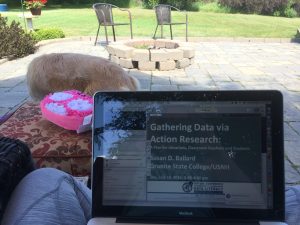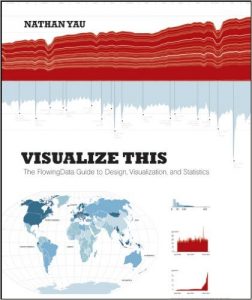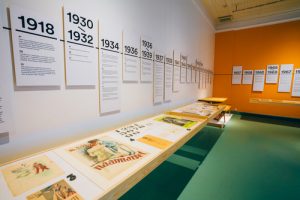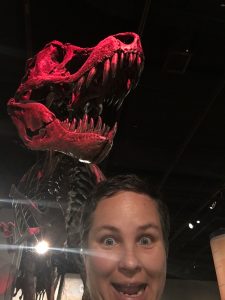 Our department read the wonderful The Skin That We Speak, by Lisa Delpit, a couple years back, and while every chapter of that book could be its own focal point for an entire department overhaul at most high schools, we committed ourselves to addressing the challenges of code switching for students in their writing. It turns out kids are pretty much naturals at code switching (switching between various dialects or other linguistic patterns from one context to another). But they have to know a code and its corresponding context before they can “switch” into it.
Our department read the wonderful The Skin That We Speak, by Lisa Delpit, a couple years back, and while every chapter of that book could be its own focal point for an entire department overhaul at most high schools, we committed ourselves to addressing the challenges of code switching for students in their writing. It turns out kids are pretty much naturals at code switching (switching between various dialects or other linguistic patterns from one context to another). But they have to know a code and its corresponding context before they can “switch” into it.
Maybe that’s why it was such an epiphany the other day when two of my “besties” (code switch!) at work had a rather funny exchange regarding a co-curricular writing assignment. In the midst of explaining the organizational structure of their work, my friend was suddenly bombarded by the students shouting: “Dorito of Tension! Dorito of Tension!” All to her understandable confusion, of course.
It didn’t take long for her to figure out that her co-teacher over in the Social Studies department had his own name for the structure of their writing. Later on she texted him (with all their pals cc’d for laughs), “What the heck is a ‘Dorito of Tension’?” She knew, of course, that it’s a mnemonic device, and a right funny one at that.
But the minor incident does bring up a broader issue.
A Thesis by Any Other Name
We all find ways to help kids wrap their heads around dense concepts and structures and nuances. In some sense one might even argue that it’s the core of our work–finding effective ways of getting some really complicated ideas to make sense for a LOT of kids in a VERY short time window.
The trouble is, the more individualized these efforts become, the more we create discrete, isolated dialects and vernaculars within our own classrooms, PLCs, grade levels, buildings, etc. Our department has been lucky enough to be gifted some time to work on vertical alignment between grades. But even with those efforts, we’ve discovered just how much we confuse kids with language barriers of our own making.
Let’s take the example that I think is most likely to be present in most districts: the language we use to discuss writing. To a professional in our field, a thesis is a main idea–is a topic sentence–is a claim.
To a kid? You might have just laid out four different tasks for her with no sense that they’re interchangeable. If this happens from grade to grade, the language transition may very well be guided–eventually a kid learns several terms for the same writing construct and is better prepared for the diversity of college professors.
But quite often it doesn’t happen that way at all. What happens, for example, when a kid has an English teacher who calls it a “thesis” and a history teacher the next hour who calls it a “claim”? I know the easy answer feels like, “Uh, he learns to read directions and figure it out.” But let’s imagine for a second that this student also has a history of struggling with writing. He isn’t great at organizing his ideas, he doesn’t always get how to choose the best evidence, and he tends to stray off topic.
Now multiply this sudden code-switching by all the other elements of a writing piece. Are they “examples” or “supporting ideas” or “quotes”? Is it a “conclusion” or “synthesis”? Do you offer “counterpoints” or “alternate perspectives”?
You get the idea. And none of this terminology is wrong! It’s the transitioning between several names for the same concept that I think is killing some kids.
My Mnemonics
Which brings me to the problem. I don’t have a solution to this one. We all get very attached to our mnemonic devices and cleverly named assignments and graphic organizers, and well we should! These are a part of our classroom culture and that’s really important!
And yet, kids understanding the complexity of writing and other concepts over time is also important. If we aren’t creating a cohesive enough narrative for them over time to internalize all of those intricate ideas, then I think we also have to stop asking ourselves why our seniors so often still lean so hard on those same graphic organizers and goofy mnemonics that we all thought they’d leave behind much earlier in their writing careers.
Perhaps it’s no wonder so many of our writers tell us that when they have to write they always end up feeling a bit salty (code switch!).

Michael Ziegler (@ZigThinks) is a Content Area Leader and teacher at Novi High School. This is his 15th year in the classroom. He teaches 11th Grade English and IB Theory of Knowledge. He also coaches JV Girls Soccer and has spent time as a Creative Writing Club sponsor, Poetry Slam team coach, AdvancEd Chair, and Boys JV Soccer Coach. He did his undergraduate work at the University of Michigan, majoring in English, and earned his Masters in Administration from Michigan State University.

 I am lucky to have a new job this year as a Curriculum Coordinator for English Language Arts and Social Studies in a new school district. Since I am new to the district, I found myself at New Teacher Orientation. At these sessions, the upper administration focuses on the district’s vision, and how the new teachers are going to be a part of that vision. Having progressed through the ranks with a lot of time in classrooms, administrators tend to share anecdotes about times when they helped to develop this vision, or instances in which they found satisfaction in keeping this vision.
I am lucky to have a new job this year as a Curriculum Coordinator for English Language Arts and Social Studies in a new school district. Since I am new to the district, I found myself at New Teacher Orientation. At these sessions, the upper administration focuses on the district’s vision, and how the new teachers are going to be a part of that vision. Having progressed through the ranks with a lot of time in classrooms, administrators tend to share anecdotes about times when they helped to develop this vision, or instances in which they found satisfaction in keeping this vision. Kids should be given an opportunity to write consistently. This writing should be varied and open to student choice. This choice may be in the strategy they use to produce writing, the length of the writing, the topic of the writing, or even the genre of the writing. Why is this important? Students who write and make choices about writing develop critical thinking skills needed in our world.
Kids should be given an opportunity to write consistently. This writing should be varied and open to student choice. This choice may be in the strategy they use to produce writing, the length of the writing, the topic of the writing, or even the genre of the writing. Why is this important? Students who write and make choices about writing develop critical thinking skills needed in our world. Amy Gurney (
Amy Gurney (

 Jianna Taylor (
Jianna Taylor ( The last days of summer are ripe for a frantic, spontaneous trip to Washington, D.C. We’ve visited before, because my sister lives there; but what was different this time, was that we have a vivacious three-year-old. We had never seen monuments as deserted as we had at 7:30 in the morning.
The last days of summer are ripe for a frantic, spontaneous trip to Washington, D.C. We’ve visited before, because my sister lives there; but what was different this time, was that we have a vivacious three-year-old. We had never seen monuments as deserted as we had at 7:30 in the morning.
 Rethink
Rethink  Caroline Thompson (
Caroline Thompson (